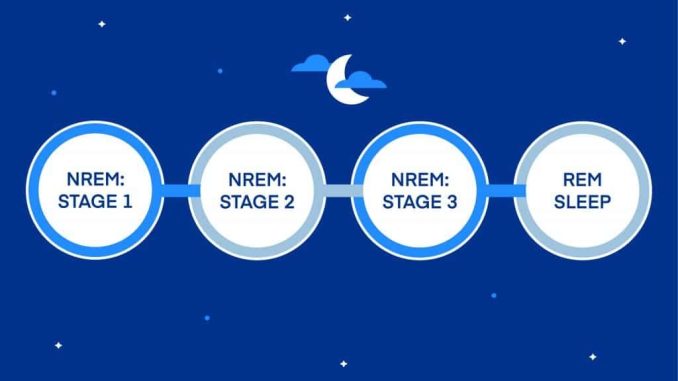
Sleep is a universal experience—something everyone does, yet few truly understand in depth. Far from being a simple, uniform state of rest, sleep is a dynamic, complex process that cycles through distinct stages, each with its own purpose and physiological characteristics. For anyone interested in health, productivity, or overall well-being, appreciating these stages can unlock valuable insights into how quality sleep supports mental clarity, emotional resilience, and even physical health.
When we think about sleep, it’s tempting to imagine it as a single, continuous block of unconsciousness. In reality, sleep is divided into several stages that cycle throughout the night, each lasting from a few minutes to around an hour. These stages broadly fall into two categories: non-rapid eye movement (NREM) sleep and rapid eye movement (REM) sleep. Both play essential, complementary roles in restoring the brain and body.
The journey into sleep begins with NREM, which itself consists of multiple phases. The first phase is a transition period from wakefulness into light sleep. During this initial stage, the body begins to slow down—heart rate drops, breathing becomes more regular, and muscles relax. This phase is often brief and fragile, explaining why a slight noise or movement can awaken someone easily. For example, many people can recall drifting off only to be jolted awake moments later, not having fully crossed into deeper sleep yet.
As the body moves deeper into NREM sleep, it enters the next phase, often called light sleep. Here, the brain waves slow, but occasional bursts of activity—known as sleep spindles—occur. These spindles are thought to play a role in memory consolidation, suggesting that even at this early stage, the brain is actively processing and sorting information from the day. For individuals who need to perform complex tasks or make important decisions, the quality of this stage can be crucial, as it lays groundwork for cognitive function.
The final phase of NREM sleep is deep sleep, sometimes referred to as slow-wave sleep. This stage is characterized by very slow brain waves and is the most restorative part of sleep. Physiologically, deep sleep supports bodily repair, immune function, and growth. It’s during this stage that the body releases growth hormone, which aids in tissue regeneration and muscle repair. Deep sleep also plays a critical role in consolidating declarative memories—the facts and information we consciously remember.
Athletes, for example, often highlight the importance of deep sleep for recovery after intense training sessions. But it’s not just physical recovery; deep sleep is also vital for emotional regulation. People deprived of deep sleep may find themselves more irritable, less able to manage stress, and prone to lapses in judgment. This is why pulling all-nighters or frequently disrupted sleep cycles can have such a profound impact on day-to-day functioning.
After cycling through these NREM stages, the brain enters REM sleep, a state most closely associated with vivid dreaming. The defining feature of REM sleep is rapid eye movement beneath closed eyelids, alongside heightened brain activity that closely resembles wakefulness. Paradoxically, while the brain is active, the body experiences temporary muscle paralysis, preventing us from physically acting out dreams.
REM sleep is critical for emotional processing and creativity. Psychologists have long noted that dreams often help us process complex feelings and experiences, contributing to mental health and problem-solving abilities. For instance, someone facing a challenging situation at work may find their dreams help them rehearse potential responses or gain fresh perspectives upon waking. Moreover, REM sleep contributes to procedural memory—skills like riding a bike or playing a musical instrument—making it an essential stage for learning and skill development.
Throughout a typical night, the body cycles between NREM and REM sleep roughly every 90 minutes. The first half of the night tends to be dominated by deep NREM sleep, with longer and more frequent REM periods occurring in the early morning hours. This shifting balance explains why the timing of sleep matters; cutting sleep short often means losing out on critical REM stages, which can impact mood, creativity, and cognitive flexibility.
Understanding these stages also sheds light on common sleep disorders. Conditions like insomnia or sleep apnea can fragment the natural sleep cycle, reducing time spent in deep and REM sleep. This fragmentation not only leads to daytime fatigue but also impairs the restorative functions that good sleep typically provides. For businesses invested in employee wellness, recognizing the importance of uninterrupted sleep can translate into better support systems, such as flexible schedules or sleep-friendly workplace cultures.
It’s worth noting that while the general pattern of sleep stages is consistent, individual variations exist based on age, lifestyle, and health. Newborns, for example, spend significantly more time in REM sleep than adults, reflecting their intense brain development needs. Older adults often experience reduced deep sleep, which may contribute to the common complaint of lighter, less restful nights.
For those seeking to improve their sleep quality, fostering an environment that encourages smooth cycling through these stages is key. This might mean maintaining a consistent bedtime, minimizing exposure to screens before sleep, and managing stress levels to avoid disruptions. Some experts also emphasize the value of naps timed to coincide with light sleep stages, which can provide rejuvenation without leaving grogginess.
In summary, sleep is a dynamic process composed of multiple stages, each vital to different aspects of physical and mental restoration. From the gentle transition into light sleep to the profound restoration of deep sleep and the cognitive processing of REM, these stages work in harmony to ensure overall health. By gaining a clearer understanding of how sleep functions, individuals and organizations alike can appreciate why quality rest is not a luxury but a fundamental pillar of well-being and productivity.
Sleep is much more than a passive break; it is a carefully orchestrated symphony of physiological states that nurture the brain and body. Recognizing the importance of each stage invites us to approach sleep with intention and respect—knowing that each night’s rest is an investment in our future clarity, resilience, and vitality.